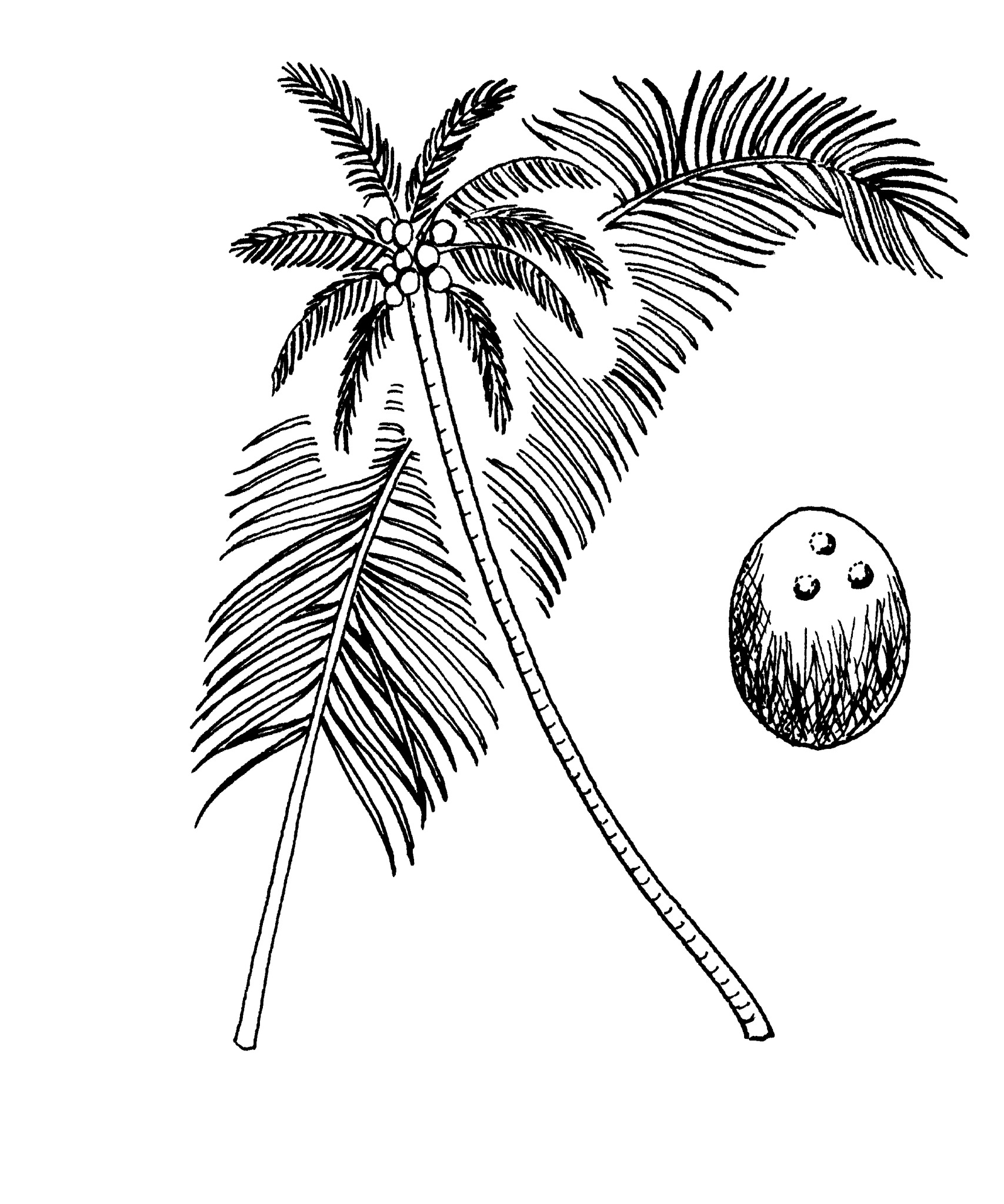
Solitary spineless palms, tending to lean. Trunks ringed with crescent-shaped leaf scars. Crownshaft absent. Leaves regularly feather-shaped wityh a slightly twisted axis, long, the stalks to about 1 m long. Leaflets numerous, regularly arranged, long-pointed. Leaf stalks spineless, deeply channelled on upper surface. Flowers unisexual, both sexes occurring in one inflorescence, borne in 3s (2 male, 1 female) at the base of the inflorescence, fewer above. Panicles arising among the leaves. Fruit 1 seeded with a thick, fibrous husk and hard inner shell (the coconut) with 3 pores ('eyes') near the base; the seed partially filled with fluid, the 'milk'.
Origin uncertain
Widely grown in the tropics where it does best in areas with underground water. In Australia grown mainly in tropical Queensland and offshore islands. Although planted as far south as Sydney these tropical palms rarely fruit well in the subtropics.
There are various cultivars for different climates, nut sizes and colours and growth habits from dwarf to tall.
Source: (2005). Arecaceae. In: . Horticultural Flora of South-eastern Australia. Volume 5. Flowering plants. Monocotyledons. The identification of garden and cultivated plants. University of New South Wales Press.
